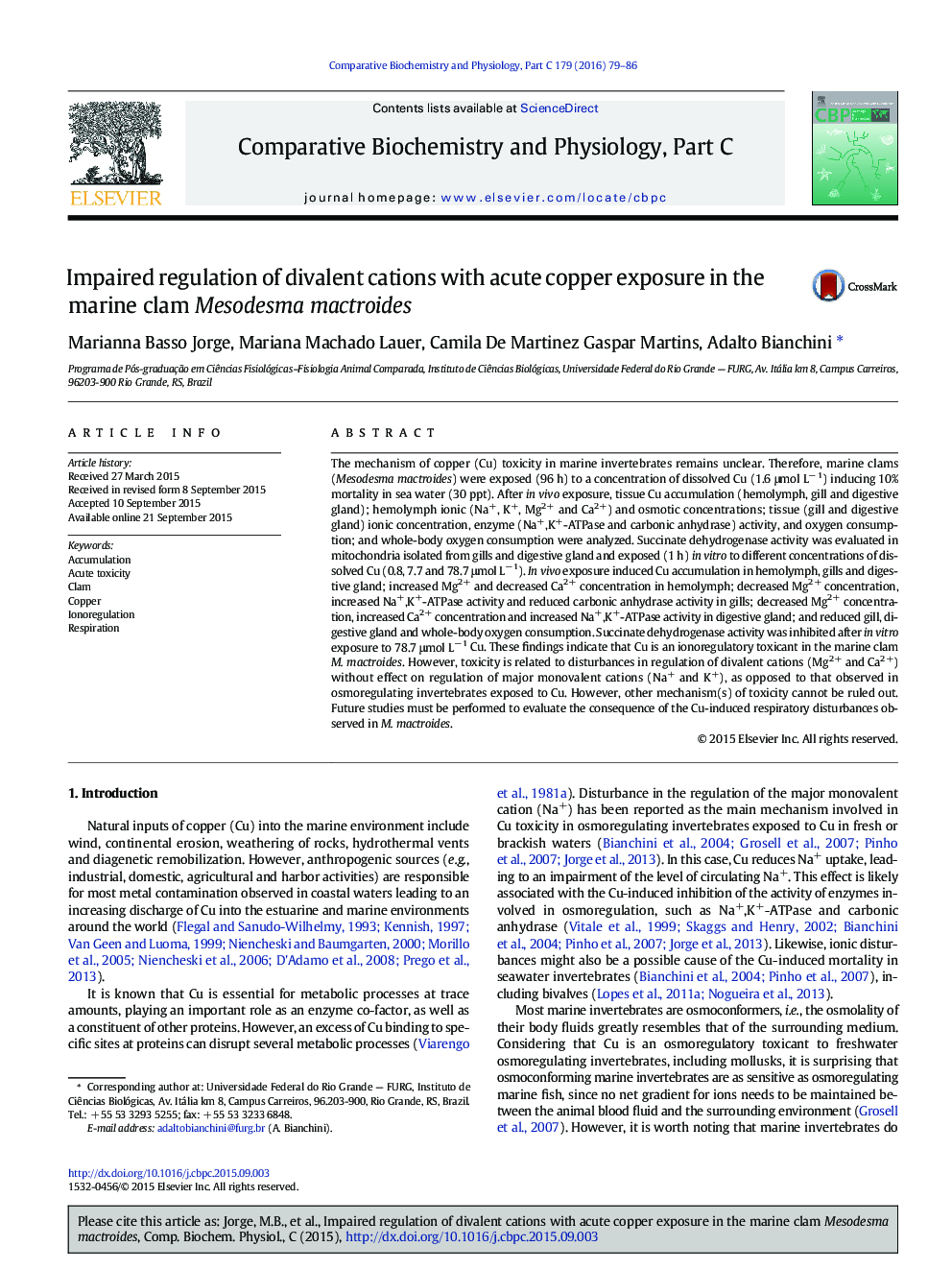| Article ID | Journal | Published Year | Pages | File Type |
|---|---|---|---|---|
| 1977169 | Comparative Biochemistry and Physiology Part C: Toxicology & Pharmacology | 2016 | 8 Pages |
Abstract
The mechanism of copper (Cu) toxicity in marine invertebrates remains unclear. Therefore, marine clams (Mesodesma mactroides) were exposed (96 h) to a concentration of dissolved Cu (1.6 μmol Lâ 1) inducing 10% mortality in sea water (30 ppt). After in vivo exposure, tissue Cu accumulation (hemolymph, gill and digestive gland); hemolymph ionic (Na+, K+, Mg2+ and Ca2+) and osmotic concentrations; tissue (gill and digestive gland) ionic concentration, enzyme (Na+,K+-ATPase and carbonic anhydrase) activity, and oxygen consumption; and whole-body oxygen consumption were analyzed. Succinate dehydrogenase activity was evaluated in mitochondria isolated from gills and digestive gland and exposed (1 h) in vitro to different concentrations of dissolved Cu (0.8, 7.7 and 78.7 μmol Lâ 1). In vivo exposure induced Cu accumulation in hemolymph, gills and digestive gland; increased Mg2+ and decreased Ca2+ concentration in hemolymph; decreased Mg2+ concentration, increased Na+,K+-ATPase activity and reduced carbonic anhydrase activity in gills; decreased Mg2+ concentration, increased Ca2+ concentration and increased Na+,K+-ATPase activity in digestive gland; and reduced gill, digestive gland and whole-body oxygen consumption. Succinate dehydrogenase activity was inhibited after in vitro exposure to 78.7 μmol Lâ 1 Cu. These findings indicate that Cu is an ionoregulatory toxicant in the marine clam M. mactroides. However, toxicity is related to disturbances in regulation of divalent cations (Mg2+ and Ca2+) without effect on regulation of major monovalent cations (Na+ and K+), as opposed to that observed in osmoregulating invertebrates exposed to Cu. However, other mechanism(s) of toxicity cannot be ruled out. Future studies must be performed to evaluate the consequence of the Cu-induced respiratory disturbances observed in M. mactroides.
Related Topics
Life Sciences
Biochemistry, Genetics and Molecular Biology
Biochemistry
Authors
Marianna Basso Jorge, Mariana Machado Lauer, Camila De Martinez Gaspar Martins, Adalto Bianchini,
